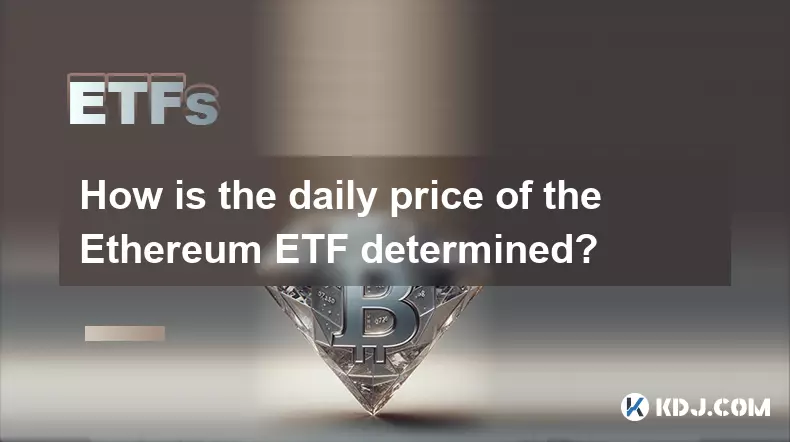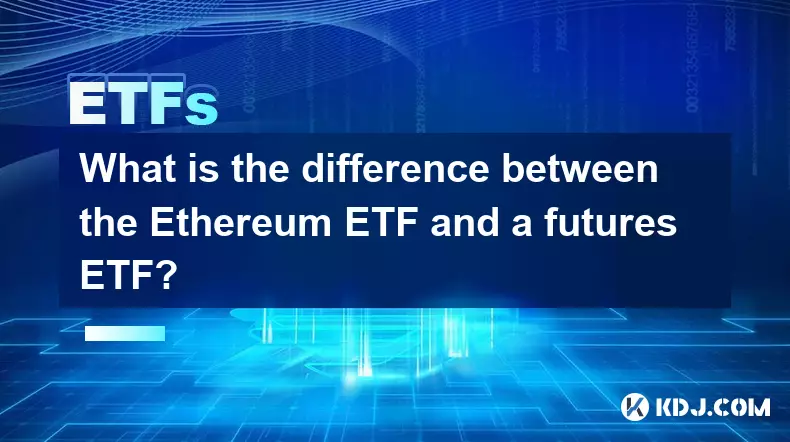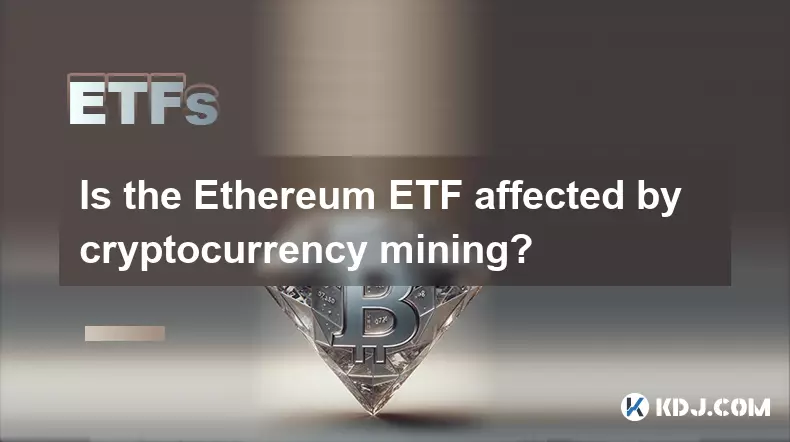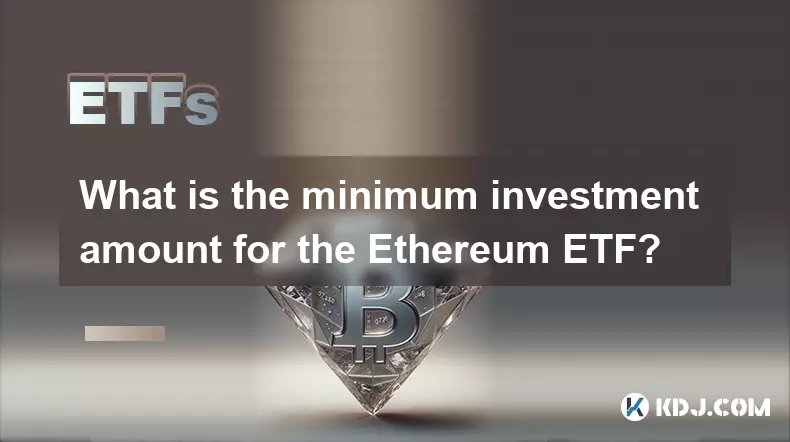-
 bitcoin
bitcoin $109523.663807 USD
-0.13% -
 ethereum
ethereum $4019.526508 USD
2.06% -
 tether
tether $1.000482 USD
0.00% -
 xrp
xrp $2.776815 USD
0.18% -
 bnb
bnb $958.942396 USD
0.12% -
 solana
solana $204.294698 USD
3.84% -
 usd-coin
usd-coin $0.999693 USD
0.00% -
 dogecoin
dogecoin $0.232115 USD
2.09% -
 tron
tron $0.338028 USD
0.84% -
 cardano
cardano $0.790920 USD
1.50% -
 hyperliquid
hyperliquid $44.871443 USD
5.60% -
 ethena-usde
ethena-usde $1.000322 USD
0.04% -
 chainlink
chainlink $21.034165 USD
2.60% -
 avalanche
avalanche $28.794831 USD
-0.54% -
 stellar
stellar $0.360466 USD
1.24%
How is the daily price of the Ethereum ETF determined?
The daily price of an Ethereum ETF is shaped by its NAV, market supply and demand, and real-time crypto market movements, with authorized participants and liquidity providers helping maintain price accuracy and stability.
Sep 26, 2025 at 06:01 pm

Daily Pricing Mechanism of Ethereum ETFs
1. The daily price of an Ethereum ETF is primarily influenced by the net asset value (NAV) derived from the underlying holdings, which consist of Ethereum tokens held in reserve by the fund. This NAV is calculated at the end of each trading day based on the closing market price of Ethereum across major cryptocurrency exchanges.
2. Market supply and demand dynamics during regular trading hours significantly impact the ETF’s market price. While the NAV provides a baseline, fluctuations occur as investors buy and sell shares on stock exchanges, leading to premiums or discounts relative to the NAV.
3. Authorized Participants (APs), typically large financial institutions, play a crucial role in maintaining price alignment between the ETF and its underlying asset. They can create or redeem ETF shares through in-kind transactions involving Ethereum, helping minimize deviations from the true value.
4. External pricing sources such as regulated crypto indexes or composite pricing aggregators are used to determine the official valuation of Ethereum. These sources compile data from multiple exchanges to reduce volatility and manipulation risks, ensuring a more accurate reflection of fair market value.
5. Regulatory reporting requirements mandate transparency in pricing methodologies. Fund managers must disclose their valuation models, data sources, and reconciliation processes, allowing investors to understand how the daily price is established and verified.
Role of Market Makers and Liquidity Providers
1. Market makers ensure continuous liquidity by quoting both buy and sell prices throughout the trading session. Their presence reduces bid-ask spreads and supports smoother price discovery for Ethereum ETF shares.
2. High-frequency trading algorithms operated by liquidity providers react swiftly to changes in the Ethereum spot market, adjusting ETF share prices in real time to reflect new information and global price movements.
3. During periods of high volatility, such as sudden shifts in crypto market sentiment or macroeconomic news, market makers may widen spreads temporarily to manage risk exposure, affecting short-term price stability.
4. Arbitrage opportunities arise when the ETF’s market price diverges from its NAV. Sophisticated traders exploit these discrepancies by purchasing undervalued shares or shorting overvalued ones, contributing to price correction and market efficiency.
5. The depth of order books on major stock exchanges hosting the ETF influences resilience against sharp price swings. A robust network of liquidity providers ensures that large trades do not disproportionately affect the share price.
Influence of Global Cryptocurrency Markets
1. Since Ethereum trades 24/7 globally, price movements outside traditional stock market hours directly affect investor expectations and subsequent ETF pricing when markets reopen.
2. Major developments such as protocol upgrades, regulatory announcements, or security incidents in the Ethereum ecosystem are immediately reflected in spot prices, which then propagate into ETF valuations.
3. Differences in timezone-based trading activity create asynchronous pressure on the ETF. For example, significant selling volume in Asian markets overnight may lead to downward adjustments in the ETF’s opening price in U.S. markets.
4. Stablecoin inflows and outflows on Ethereum-based decentralized exchanges serve as indicators of capital movement, often preceding broader price trends that influence ETF performance.
5. The integration of real-time blockchain analytics allows fund operators to monitor on-chain activity, providing additional context for assessing Ethereum’s fundamental value and potential price trajectory.
Frequently Asked Questions
What causes an Ethereum ETF to trade at a premium or discount?An Ethereum ETF may trade above (premium) or below (discount) its NAV due to investor sentiment, limited share availability, or delays in reflecting rapid spot market movements. Strong bullish sentiment often drives premiums, while uncertainty or redemption constraints can result in discounts.
How often is the ETF’s net asset value updated?The official NAV is updated once per trading day, typically after market close. However, indicative intraday values are published throughout the day to provide investors with approximate valuations based on real-time Ethereum prices.
Can the ETF hold assets other than Ethereum?Most Ethereum ETFs are designed to hold only Ethereum as the primary asset. Some funds may temporarily hold cash or short-term instruments for operational purposes, but exposure remains overwhelmingly concentrated on Ethereum itself.
Are there differences between physically backed and synthetic Ethereum ETFs?Physically backed ETFs directly own Ethereum tokens stored in secure custodial solutions. Synthetic versions use derivatives like futures or swaps to replicate price performance without direct ownership. Most approved Ethereum ETFs follow the physical model to ensure transparency and reduce counterparty risk.
Disclaimer:info@kdj.com
The information provided is not trading advice. kdj.com does not assume any responsibility for any investments made based on the information provided in this article. Cryptocurrencies are highly volatile and it is highly recommended that you invest with caution after thorough research!
If you believe that the content used on this website infringes your copyright, please contact us immediately (info@kdj.com) and we will delete it promptly.
- Sleep Token's Macabre Metal: A Ritualistic Rise to Rock Stardom
- 2025-09-27 22:25:15
- BlockchainFX: Is This Presale the Next Binance?
- 2025-09-27 22:25:15
- ORDER Token's Binance Listing Ignites Crypto Rally: What Traders Need to Know
- 2025-09-27 22:30:01
- Ethereum ETFs Feel the Heat: Investors Exit as Staking Approval Looms?
- 2025-09-27 22:30:01
- Crypto Presales & Meme Coins: Hunting for the Next 100x Opportunity
- 2025-09-27 22:30:01
- Cardano (ADA) Price Prediction: Bullish Scenarios and Market Dynamics
- 2025-09-27 22:30:16
Related knowledge

What is the future development prospect of the Ethereum ETF?
Sep 23,2025 at 01:36am
Ethereum ETF and Market Dynamics1. The introduction of an Ethereum ETF has sparked significant interest across the digital asset space. Institutional ...

Is the Ethereum ETF affected by Ethereum gas fees?
Sep 25,2025 at 12:18am
Ethereum ETFs and Their Structural Independence from Gas Fees1. Ethereum Exchange-Traded Funds (ETFs) are financial instruments designed to track the ...

What is the difference between the Ethereum ETF and a futures ETF?
Sep 23,2025 at 06:18am
Bitcoin's Role in Decentralized Finance Evolution1. Bitcoin remains the cornerstone of decentralized finance, serving as a benchmark for value transfe...

Is the Ethereum ETF affected by cryptocurrency mining?
Sep 23,2025 at 03:37pm
Understanding Ethereum ETFs and Their Market Drivers1. An Ethereum ETF (Exchange-Traded Fund) is a financial product that tracks the price of Ethereum...

What is the minimum investment amount for the Ethereum ETF?
Sep 24,2025 at 05:36pm
Understanding Ethereum ETF Investment Thresholds1. The minimum investment amount for an Ethereum ETF can vary significantly depending on the financial...

What are the trading hours for the Ethereum ETF?
Sep 25,2025 at 07:37pm
Understanding Ethereum ETF Trading Hours1. Ethereum ETFs are traded on traditional stock exchanges, which means their availability is bound by the ope...

What is the future development prospect of the Ethereum ETF?
Sep 23,2025 at 01:36am
Ethereum ETF and Market Dynamics1. The introduction of an Ethereum ETF has sparked significant interest across the digital asset space. Institutional ...

Is the Ethereum ETF affected by Ethereum gas fees?
Sep 25,2025 at 12:18am
Ethereum ETFs and Their Structural Independence from Gas Fees1. Ethereum Exchange-Traded Funds (ETFs) are financial instruments designed to track the ...

What is the difference between the Ethereum ETF and a futures ETF?
Sep 23,2025 at 06:18am
Bitcoin's Role in Decentralized Finance Evolution1. Bitcoin remains the cornerstone of decentralized finance, serving as a benchmark for value transfe...

Is the Ethereum ETF affected by cryptocurrency mining?
Sep 23,2025 at 03:37pm
Understanding Ethereum ETFs and Their Market Drivers1. An Ethereum ETF (Exchange-Traded Fund) is a financial product that tracks the price of Ethereum...

What is the minimum investment amount for the Ethereum ETF?
Sep 24,2025 at 05:36pm
Understanding Ethereum ETF Investment Thresholds1. The minimum investment amount for an Ethereum ETF can vary significantly depending on the financial...

What are the trading hours for the Ethereum ETF?
Sep 25,2025 at 07:37pm
Understanding Ethereum ETF Trading Hours1. Ethereum ETFs are traded on traditional stock exchanges, which means their availability is bound by the ope...
See all articles









































































